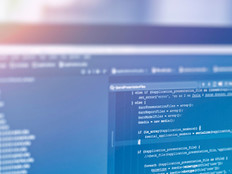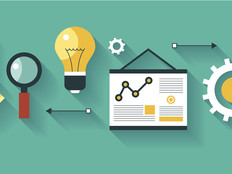Software Asset Management Gives IT Managers Control Over Apps
Good IT governance requires full awareness of how and where software assets are being used. The best way to achieve this goal is by using a software asset management (SAM) solution, which enables IT teams to better track the deployment and utilization of software across an entire organization.
By supplying coordinated, comprehensive programs and policies designed to control software expenditures, capitalize on volume discounts and deploy software more efficiently, a SAM solution helps IT staff gain control over, and visibility into, their applications.
The SAM approach can also curb cyber risks and improve the budgeting process by providing a deeper understanding of an organization’s software environment. Further, SAM solutions keep organizations in compliance with software vendor agreements, reducing the number of audits and potential fines paid.
“There used to be a time when you could get away with managing your software assets through a spreadsheet,” says Matt Fisher, a vice president with Snow Software. “Those days are long gone.”
The Benefits of Software Asset Management
SAM's primary value is its ability to simplify and make transparent the use of software products, acquisition and deployment processes, and license requirements that are often highly complex, says Charles King, principal analyst at Pund-IT. “Add in related issues, such as understanding the application requirements of employees and groups, and the capabilities of SAM often extend beyond the capabilities of any single individual or management team,” King adds. “People are responsible for final purchase and management decisions, but SAM solutions can significantly enhance the productivity and efficiency of those people.”
SAM solutions are designed for rapid, easy integration into existing IT operations and management processes. “For example, tools can be configured to discover, inventory and keep track of where applications are installed and being used,” King says. “Alerts can be generated for a variety of purposes, such as when licenses are coming up for renewal.”
Besides ensuring software license compliance, a SAM solution can also prevent an organization from wasting money by acquiring more licenses than it actually needs. “Frequently, organizations will purchase additional licenses to reduce the risk of audit or because discounting will push them into a lower price band,” says Patricia Adams, IT asset management evangelist for LANDESK Software. “Overlicensing is a hedge against an audit, but an effective SAM program doesn't need hedges.”
Helping organizations reharvest unused software licenses is another way SAM benefits adopters. “SAM provides the ability to reharvest licenses and redeploy them through your organization, instead of purchasing new licenses or overlicensing,” says Scott Bickley, senior director of Info-Tech Research Group’s vendor advisory practice.
“SAM also helps organizations avoid regulatory hassles by assisting in compliance with regulatory requirements,” explains Gaurav Kumar, a senior analyst at Transparency Market Research.
“SAM tools also can assist an organization in software license negotiations and enhance employee efficiency by distributing applications to the workers who need them,” King says. “By significantly reducing the complexities of using and managing software licenses, SAM tools are considered critical solutions by many businesses.”
SAM solutions can be easily customized to meet an organization's specific needs as well as license requirements. “Different software vendors have different license rights for their applications,” Fisher explains. “Some enable users to install the software on more than one device, while others allow organizations to install the software on a physical machine and its associated virtual machine.” A SAM tool can automatically keep track of these and other vendor requirements.
Gaining Visibility into Software Assets
SAM solutions are designed to provide clear visibility into an organization's software assets, regardless of the model or delivery method used. “SAM tools have evolved to support the way organizations are using software,” Adams says. “There's the ability to track any asset, regardless of whether it is enterprise, infrastructure, client, mobile, server, cloud, virtual software or some other combination of delivery channel.”
Customizable dashboards help all stakeholders track software use from purchase to retirement. Advanced features, such as software usage metering, provide insights that might otherwise go unobserved. “You can understand exactly how often an application is being utilized,” Bickley says. “Is an application, for example, sitting on someone's desktop for six months before it gets opened?”
SAM solutions are also designed to scale with an organization's size, as well as accommodate new types of infrastructure and software. “Growing centralization of the IT infrastructure is going to play a key role in SAM deployments,” Kumar predicts. “Also, growing Internet of Things [IoT] adoption should be a key focus area for SAM vendors, as IoT would create the need for new software for management and security in organizations.”
“In my experience, the unique thing about SAM is that it is an interdisciplinary function,” Bickley says. “It typically covers areas like IT procurement, contracts and contract negotiation, as well as core SAM tactical areas.”
A Valuable Tools as Companies Grow
A primary objective of all SAM solutions is to give organizations a better understanding of their overall software environment, which leads to improved decision-making. “In general, the more complex an organization's software use or solution portfolio is, the more necessary SAM solutions become,” King says.
SAM solutions also allow organizations to uncover and eliminate software that has outlived its usefulness. “They help an organization manage lifecycles to prevent the buildup of technical debt by legacy applications or operating systems in use for too long,” Adams says. “They can also create efficiencies by enabling and supporting new project rollouts and not being a bottleneck to getting software that is needed.”
For many adopters, a SAM solution's most valuable attribute is its ability to help organizations successfully resolve or even avoid costly audits, which can result in fees and fines possibly soaring into the millions of dollars. SAM solutions can also be used to provide documented proof of compliance – and a stronger negotiating position – when an audit does occur.
“Any business that doesn't use a SAM tool for software licensing likely won't have a complete understanding of its software infrastructure and licensing status,” Fisher says. “This puts the organization at risk of a surprise software audit or review from publishers.”
How to Deploy a SAM Solution
“Many organizations believe that implementing a SAM program is going to be extremely complex, but the return on investment can be justified after two or three unexpected audits that result in additional costs or license true-ups,” Adams says.
Organizations should look for a SAM solution that allows IT staff to perform hardware and software discovery across all networks and platforms, track deployment and usage of software in real time, and maintain and track an inventory of all software licenses throughout the software lifecycle, says Jodie Kelley, senior vice president and general counsel for the Business Software Alliance. “It should also be scalable to fit the exact needs of the organization,” she notes.
To manage the lifecycle from requisitioning through to disposal requires embedded and customizable workflow processes with an approved software catalog in the data center, Adams notes. “Software installs need to be optimized against the license entitlement, so knowing the underlying hardware configurations, licensing and product SKUs is a priority,” she adds. “Given the skills shortage for knowledgeable SAM talent, having a toolset with integrations is essential to reduce the amount of manual data entry that has to happen.”
Software licensing best practices, such as re-evaluating license contracts three times per year and doing periodic self-audits to ensure compliance, are also essential to a seamless, effective SAM program.
Deploying and using a SAM solution can save an organization a significant amount of money over time, particularly organizations with large or complex software implementations and those that leverage high-value applications. “But the potential value of SAM also involves customers' peace of mind and how it best utilizes the time and talents of its employees,” King notes. “The fact is that many large organizations have the skills and brainpower in-house to successfully plan, negotiate, deploy and manage cross-company software implementations, but SAM solutions can make individual steps or the entire process easier and more effective.”
“Having a SAM program is not a fad or a game, but a discipline that can support the business to be more agile and flexible,” Adams says.
Learn more about software asset management and how your organization can find additional savings at CDW.com/SAM.








